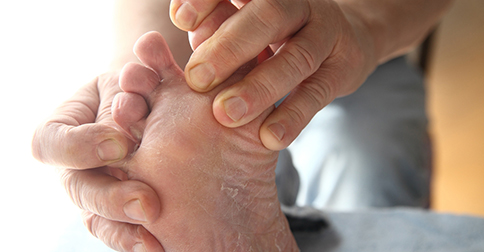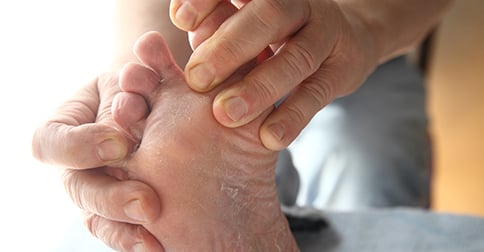If you have Type 2 diabetes, you may be well acquainted with the foot pain that often accompanies your condition. Or perhaps your diagnosis is recent enough that you haven’t experienced this particular symptom just yet. Either way, you must take good care of your feet, as your diabetes puts you at risk for foot ulcers, heel spurs, and even amputation.
Like many people, if it took you a while to realize your Type 2 diabetes was there, your smallest nerves and blood vessels may have suffered damage before you began treatment. The result of this is that your feet may feel numb in some places and highly sensitive in others. You may have scratches, cuts, or sores that are slow to heal. But diabetic shoes can protect your feet, and if you have Type 2 diabetes, the right shoes are essential.
Read on to learn what diabetic shoes are and why they’re so important.
How Are Diabetic Shoes Different from Regular Shoes?
Shoes that are made for people with diabetes have a toe box that is higher and wider than regular shoes. The purpose of this is to give your toes a bit more room, because if they rub against each other or against the shoe, they may blister, and they won’t heal as quickly as they did in your pre-diabetic days.
You may think you would know if your toes were blistering, but because of the numbness that comes along with nerve damage from high blood sugar, your toes cannot send your brain a distress signal when they are in pain. A roomier toe box offers extra space for your toes to spread out, shielding them from injury.
Diabetic shoes provide extra support for your arches, ankles, and heels. They also have stabilizers to keep your feet from overpronating (rolling too far inward) or underpronating (not rolling inward enough) while walking, which can cause raw spots that later become sores or blisters.
And finally, diabetic shoes are usually deeper than regular shoes so that you can use an orthotic insert. These inserts can correct an irregular stride, give your heel more cushioning, and offer your arch more support. Many people with Type 2 diabetes use inserts, so the extra depth is vital.
Things to Consider When Shoe Shopping
When you go shopping for a pair of diabetic shoes, make sure they don’t have any inner seams that might irritate your foot and cause a sore or blister. Feel the inside of the shoe to make sure the inner lining is smooth and even.
Slip-ons may be tempting because of the convenience factor, but ultimately, they’re not a good idea. Your feet will swell during the course of the day, and because slip-ons can’t be adjusted, you may have chafing issues in the morning and loss of circulation in the evening. Look for shoes with Velcro or laces instead -- that way, you can adjust them so that they fit properly, no matter the time of day.
Make sure that your shoes have removable insoles. You may need to replace them with prescription or over-the-counter orthotic inserts, so the ability to take out the original insoles is a must.
The time of day that you go shopping is important, too. As mentioned above, your feet tend to swell in the afternoon and evening, so that’s the best time to try on shoes. Even if you plan to buy online because of the lower prices, trying on shoes in person is the best way to make sure you end up with a comfortable, functional pair.
Need Diabetic Shoes? Call BioTech!
Here at BioTech, we offer a wide range of custom orthotics -- including diabetic shoes and custom-molded diabetic inlays. We take your comfort and health seriously, and we won’t rest until you have a great pair of shoes that provide you with an excellent quality of life. Contact us today!

